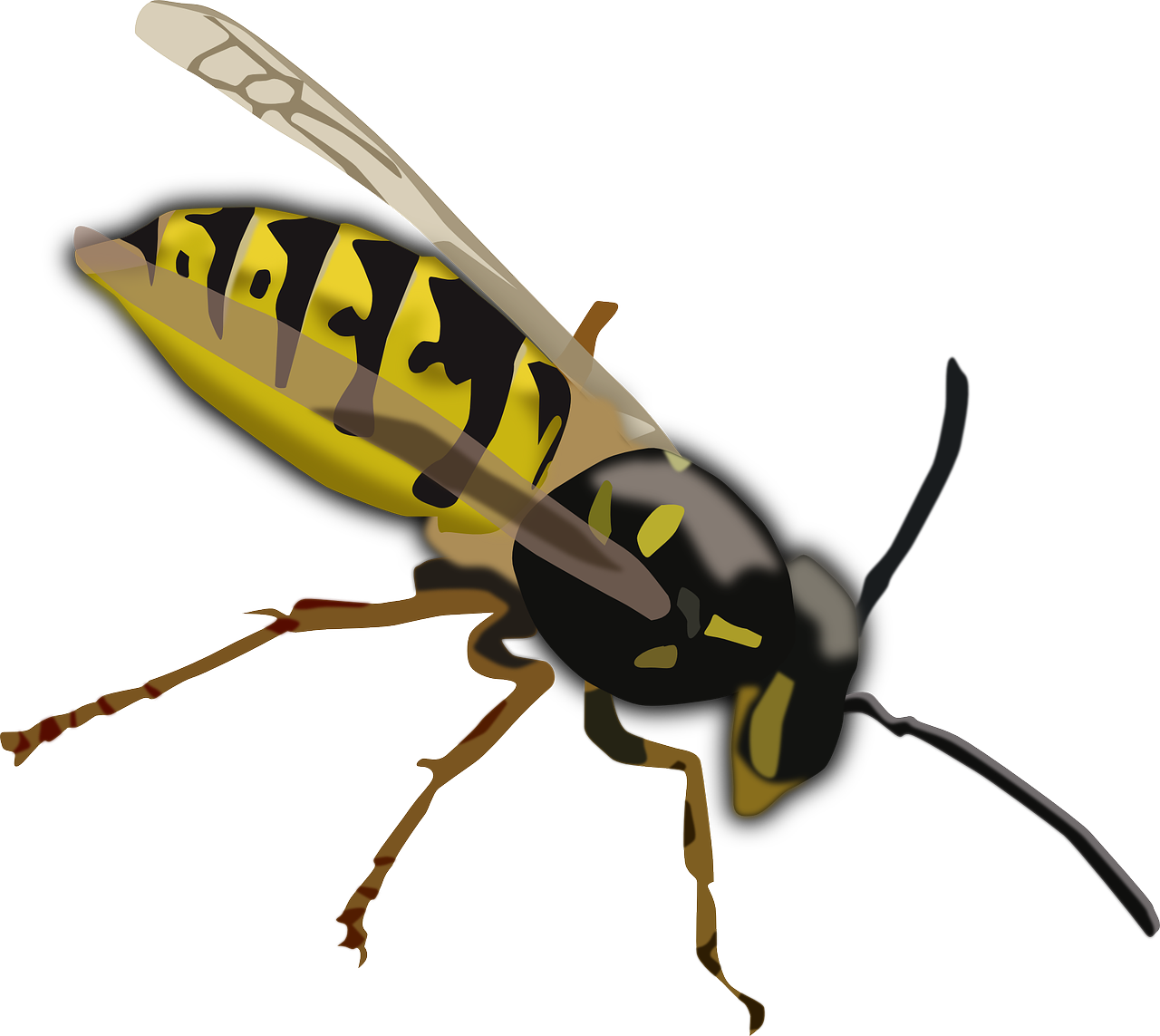 [source](https://www.flickr.com/photos/yellowstonenps/48756803817)
[source](https://www.flickr.com/photos/yellowstonenps/48756803817)
To round up the series I started on insects and bites, I will be generally talking about insect stings today. Due to the curious nature of man's best friend which is the dog, they always keep their nose to the ground and such acts could cause harmful effects to them, insects like wasps, bees, and hornets. Any pet can get affected by the stings, but it is more common with dogs.
A bee can sting just once and after that it dies, wasps on the other hand can bite several times in one episode creating a more painful reaction. The funny thing is, most insects are rather shy creatures, so their sting is a defensive reaction to protect themselves or their homes, but there are a few of those insects that can get very aggressive when a pet or human comes close and they feel threatened, a good example of such insect is the bold-faced hornet.
If your pet gets stung by an insect, the first thing is to recognize it, if you notice suddenly that your dog begins to chew his foot, paws at his face, or begins to experience swelling in other areas of the body, it may be an indication of an insect bite that you should be aware of. Check out the surroundings for other crawling or biting insects and get rid of them to prevent continuous biting.
 [source](https://www.flickr.com/photos/justo_ruiz_photogrpher/3699416798)
[source](https://www.flickr.com/photos/justo_ruiz_photogrpher/3699416798)
Bees are the only insects that leave their stingers in their victims, the stingers left behind continue to pump venom to the site of the bite, so removing them will reduce the amount of toxins that will be injected into the body of the dog. A thick paste of baking soda and water applied to the site of the sting will help them feel better, if there are multiple bites or stings, a soothing oatmeal bath will help out.
An ice pack could be applied to the bite area for about 10 minutes to help reduce swelling, and a dose of oral anti-histamine can be used to minimize reaction and limit itching. If your pet continues to itch, use an Elizabethan collar as continuous scratching will only delay healing and cause infection. Provide fresh water to your pet and for those who are finding it difficult to feed, provide moist food for them.
 [source](https://www.needpix.com/photo/94089/wasp-hornet-bee-insect-sting-yellow-black-wings-free-vector-graphics)
[source](https://www.needpix.com/photo/94089/wasp-hornet-bee-insect-sting-yellow-black-wings-free-vector-graphics)
The veterinary emergency clinic should be the first stop if you notice any of these signs, swelling around the neck and head that could affect respiration, hives appearing as bumps underneath the skin, difficulty with wheezing or breathing, drooling excessively, getting agitated, seizures, dizziness, and vomiting.
The best method of protecting your pet against things like this is through prevention. Keep your home safe from stinging insects and all forms of insects in general. If you go out and your pet seem to be digging a hole consistently, you should find out if they are not trying to disturb some insect that could sting them, if that is the case get yourself and your pet out of that environment immediately.
From these series of insects and pets, I am sure we have learned the importance of protecting our homes and by extension our pets from insects in general. While some of them only cause noise disturbance and irritation, other come with dangerous diseases.
References
 [source](https://www.flickr.com/photos/yellowstonenps/48756803817)
[source](https://www.flickr.com/photos/yellowstonenps/48756803817) [source](https://www.flickr.com/photos/justo_ruiz_photogrpher/3699416798)
[source](https://www.flickr.com/photos/justo_ruiz_photogrpher/3699416798) [source](https://www.needpix.com/photo/94089/wasp-hornet-bee-insect-sting-yellow-black-wings-free-vector-graphics)
[source](https://www.needpix.com/photo/94089/wasp-hornet-bee-insect-sting-yellow-black-wings-free-vector-graphics)